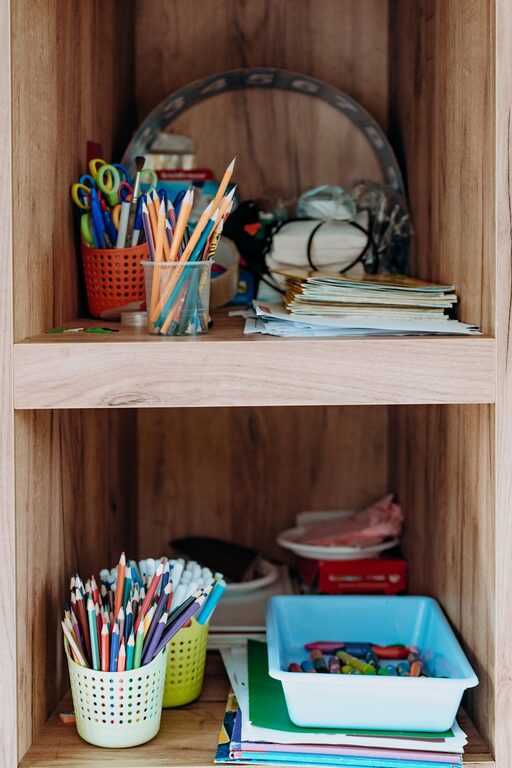Children’s artwork is a wonderful expression of their creativity and imagination. However, as the drawings, paintings, and craft projects start to pile up, it can quickly become overwhelming to manage and store all those precious creations. Whether you want to keep everything or just the best pieces, maintaining an organized system can help you celebrate your child’s progress while keeping your home tidy.
In this post, we’ll explore practical and fun tips for keeping kids’ art organized that can work for any family. From display ideas to smart storage solutions, you’ll find ways to honor your child’s art without the mess.
Why Organizing Kids’ Art Matters
Before diving into the tips, it’s helpful to understand why organizing your child’s art is important:
– Preserves memories: Artwork captures your child’s interests and growth at each age.
– Reduces clutter: Avoid piles of paper taking over counters and drawers.
– Encourages pride: A well-organized display shows your child their creativity is valued.
– Makes sharing easier: Organized pieces are simple to gift or digitize.
Now, here’s how to get started!
Create a Dedicated Art Space
Designate a specific area in your home for your child’s art. This could be a corner of a playroom, a wall in the hallway, or a shelf in their bedroom. Keeping art materials and finished pieces in one zone helps avoid scattered supplies and lost masterpieces.
Tips for an Art Space:
– Use washable bins or drawers for art supplies like crayons, markers, and glue.
– Add clipboards or strings with clips on the wall for displaying current favorites.
– Provide a small table or desk sized just for your child’s projects.
Display Art Creatively
Displaying artwork not only celebrates your child’s efforts but also encourages them to keep creating. Here are some ideas to showcase their work in an organized way:
Rotating Gallery
Use frames with easy-open backs or a wire with clips to regularly swap out artwork. Limit the number on display to avoid clutter and keep the gallery fresh.
Art Collage or Poster
Take digital photos or scans of drawings and compile them into a collage or poster. This reduces physical storage while still preserving memories.
Bulletin Board or Corkboard
Pin up rotating art on a bulletin board to create a dynamic, changeable display. You can organize pieces by theme, age, or color.
Sort and Select Regularly
It’s tempting to save every piece of art your child creates, but it’s not always practical. Get into the habit of sorting artworks together once a month or every few months.
Sorting Steps:
- **Keep:** Choose special or meaningful pieces.
- **Gift:** Pick some to share with family or friends.
- **Digitize:** Scan or photograph artwork before recycling.
- **Recycle:** Discard excess works that aren’t as treasured.
Sorting together also helps teach your child decision-making and valuing quality over quantity.
Use Storage Solutions That Work
Once you’ve selected the artwork to keep, it’s time to store them neatly. Here are storage ideas suited to different amounts and types of art:
Portfolio Folders
Large, artist-style portfolio folders with sleeves hold paper art flat and safe. Label folders by year or child to find pieces easily later.
Storage Bins or Boxes
Plastic bins or decorative boxes work well for 3D crafts or bulk paper especially when labeled clearly.
Filing Cabinets or Accordion Folders
Organize drawings in folders by date or theme inside a filing cabinet or accordion file for a compact system.
Digital Archives
Using an app or cloud folder to save digital photos of artwork creates a backup and frees up space at home. You can also create photo books or calendars from the images.
Encourage Creative Reuse
Sometimes, repurposing art is a fun way to honor your child’s creations without keeping everything. Here are some ideas:
– Turn drawings into greeting cards for family birthdays or holidays.
– Use art as wrapping paper for gifts.
– Create a scrapbook or journal where pieces are glued with notes about the story behind them.
– Make a quilt or pillowcase print from fabric-painted artwork.
Involve Your Child in the Process
Including your child in organizing their art can empower them and make the process enjoyable. Ask for their opinions on which pieces to keep or display, and encourage them to decorate their art space.
Children often feel proud when they see their work treated with care. It can also be a great way to start conversations about their interests and feelings.
Final Thoughts
Keeping kids’ art organized doesn’t have to be a chore. By making space for creativity, displaying works with pride, sorting thoughtfully, and storing carefully, you help preserve beautiful memories while keeping your home neat.
Try out these tips and find the systems that work best for your family. Remember, the goal isn’t to keep every single scribble but to celebrate your child’s creativity in a way that feels meaningful and manageable.
Happy organizing!


